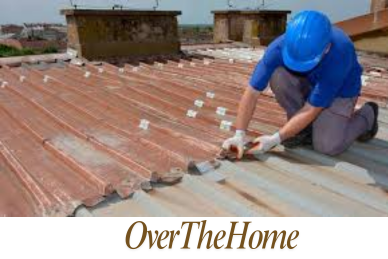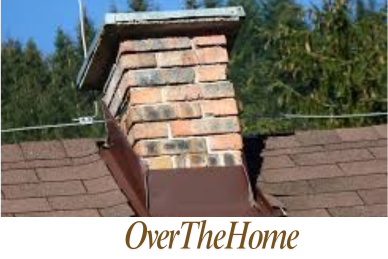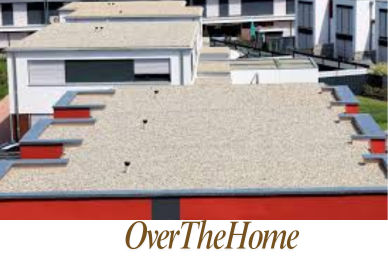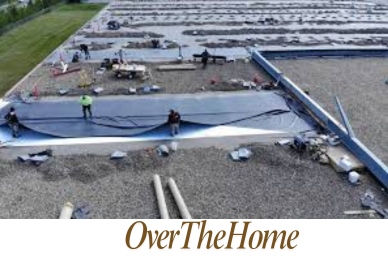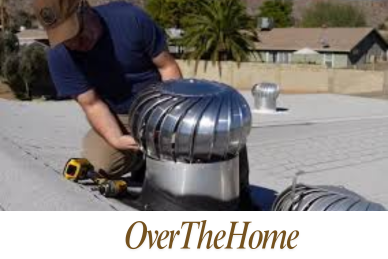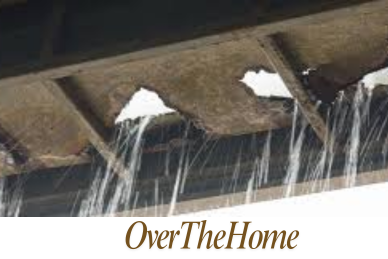How to Repair Rotted Roof Truss Ends? Repair Method
As a homeowner, having issues with the roof truss is very frustrating. trusses are a very crucial thing as they provide structural support to your roof. So when they start to rot, it’s a big deal. But don’t worry, I’ve got your back. In this guide, I’ll walk you through the steps to repair rotted roof truss ends like a pro. Whether you’re a DIY enthusiast or seeking professional help, you’ll find all the information you need right here.
Steps for Repairing Rotted Roof Truss Ends
Addressing rotted roof truss ends is a critical task that demands a systematic approach to ensure the structural integrity of your roof. Follow these steps to tackle this challenge effectively:
Step 1 – Inspect and Assess the Damage
Before commencing any repair work, conduct a thorough inspection of the trusses to determine the extent of the damage. Carefully examine the truss ends, looking for telltale signs of rot, such as discoloration, softness, or crumbling wood. This initial assessment will help you gauge the scope of the repair work required and plan accordingly.
Step 2 – Remove the Compromised Wood
Once you’ve identified the rotted areas, it’s time to remove the damaged wood from the truss ends. Use a saw or chisel to carefully cut away the affected portions, taking care not to further compromise the structural integrity of the truss. Proceed with caution and precision to ensure that only the compromised wood is removed, leaving the sound portions intact.
Step 3 – Prepare the Truss Ends for Reinforcement
After removing the rotted wood, it’s crucial to prepare the exposed surfaces for the upcoming reinforcement process. Use a wire brush or sandpaper to remove any debris, old finishes, or loose material that may hinder the adhesion of the new components. Once the surfaces are clean and free of contaminants, apply a wood preservative or sealant to protect the remaining wood from further decay and moisture intrusion.
Step 4 – Sister the Truss Ends with New Wood
Reinforcing the weakened truss ends is the cornerstone of the repair process. This is typically achieved by “sistering” the truss ends, which involves attaching new, rot-resistant wood alongside the existing, sound portions of the truss. Carefully measure and cut the new wood to fit snugly against the truss ends, ensuring proper alignment and structural support.
Securely fasten the new wood using screws, nails, or bolts, following local building codes and manufacturer recommendations for proper fastener spacing and placement. The goal is to create a strong, seamless bond between the new wood and the existing truss, effectively reinforcing the weakened areas.
Step 5 – Use Splice Plates for Additional Reinforcement
In cases where the rot damage is extensive or the truss ends are supporting significant loads, consider using metal splice plates as an additional reinforcement method. These pre-punched metal plates are designed to be secured on either side of the repaired section, effectively sandwiching it and restoring strength and stability to the truss ends.
Consult with a professional or refer to local building codes to determine if splice plates are necessary for your specific situation, and follow the manufacturer’s instructions for proper installation.
Step 6 – Fill Any Gaps or Voids
After the reinforcement process, it’s common to find gaps or voids between the new wood and the existing truss. To ensure a seamless and structurally sound repair, use a suitable filler material, such as epoxy or a wood filler, to fill these spaces. Follow the manufacturer’s instructions carefully, allowing the filler to cure properly before proceeding to the next step.
Step 7 – Replace the Roofing Material
Once the structural repairs are complete, it’s time to address the roofing material above the repaired truss ends. Carefully remove the existing roofing material in the affected area and replace it with new, compatible roofing components. Ensure that the new roofing is properly sealed and secured to prevent water intrusion and further damage to the repaired trusses.
Step 8 – Inspect and Finalize the Repair
After completing all the repair steps, take a moment to conduct a final inspection of the trusses and roofing. Examine the repaired areas thoroughly, looking for any signs of potential issues or areas that may require additional attention. If everything appears to be in order, congratulate yourself on a job well done – you’ve successfully restored the structural integrity of your roof trusses!
Remember, while this guide provides a solid framework for repairing rotted roof truss ends, it’s always advisable to consult with a professional contractor or structural engineer if you encounter extensive damage or have concerns about your ability to complete the repairs safely and effectively.
Is It Possible to Fix Extreme Rotted Roof Truss Ends?
When it comes to extreme cases of rotted roof truss ends, attempting to fix the issue yourself is generally not recommended. Here’s why:
Structural Integrity Concerns
Extreme rot can severely compromise the structural integrity of the roof trusses. These vital components play a crucial role in supporting the weight of the roof and maintaining the overall stability of the structure. When rot has progressed to an advanced stage, it can significantly weaken the truss, making it unable to bear the intended load. This poses a serious safety risk, as a compromised truss can potentially lead to catastrophic roof failure or collapse.
Complexity of Repairs
Addressing extreme rot in roof truss ends often involves extensive repairs that go beyond simple reinforcement or sistering techniques. In many cases, the entire truss may need to be replaced, or complex reinforcement systems, such as specialized trusses or engineered structural components, may be required. These types of repairs demand a high level of expertise in structural engineering, construction techniques, and load calculations to ensure that the repaired or replaced components can adequately support the roof’s weight and maintain structural integrity.
Risk of Improper Repair
Attempting to repair extremely rotted roof truss ends without the proper knowledge, skills, and experience can lead to ineffective or even dangerous outcomes. Improper repairs may not adequately address the underlying structural issues, leaving the roof vulnerable to further deterioration or potential collapse. Additionally, attempting complex repairs without the necessary expertise can put your safety at risk, as working on compromised structural elements can be hazardous.
In cases of extreme rotted roof truss ends it is strongly recommended to seek professional assistance from a licensed contractor or structural engineer. These experts have the knowledge, tools, and resources to thoroughly assess the situation, determine the most appropriate course of action, and execute the necessary repairs or replacements in a safe and code-compliant manner.
FAQ
How can I prevent future rot in my roof trusses?
To prevent future rot, address any sources of moisture intrusion, such as leaks or poor ventilation. Ensure that your attic and roof spaces are properly insulated and ventilated to prevent condensation buildup. Additionally, consider using rot-resistant or pressure-treated wood for any future repairs or replacements.
Can I repair rotted roof trusses myself, or should I hire a professional?
While minor repairs can be tackled as a DIY project, extensive damage or structural concerns should be addressed by a professional contractor or structural engineer. If you’re unsure about the extent of the damage or your ability to perform the repairs safely, it’s always best to seek professional assistance.
How long will the repairs last?
The longevity of your repairs will depend on several factors, including the quality of materials used, the thoroughness of the repair work, and the prevention of future moisture intrusion. With proper execution and maintenance, quality repairs can last for many years, potentially even the remaining lifespan of your roof.
Wrapping Up
While it’s possible to tackle minor cases yourself, extreme rot is a different ball game. Don’t take unnecessary risks – your safety should be the top priority. If you’re ever in doubt, don’t hesitate to bring in the professionals. They have the expertise and resources to ensure the job is done right. And hey, if you have any lingering questions, feel free to drop them in the comments below. I’m always happy to help!

